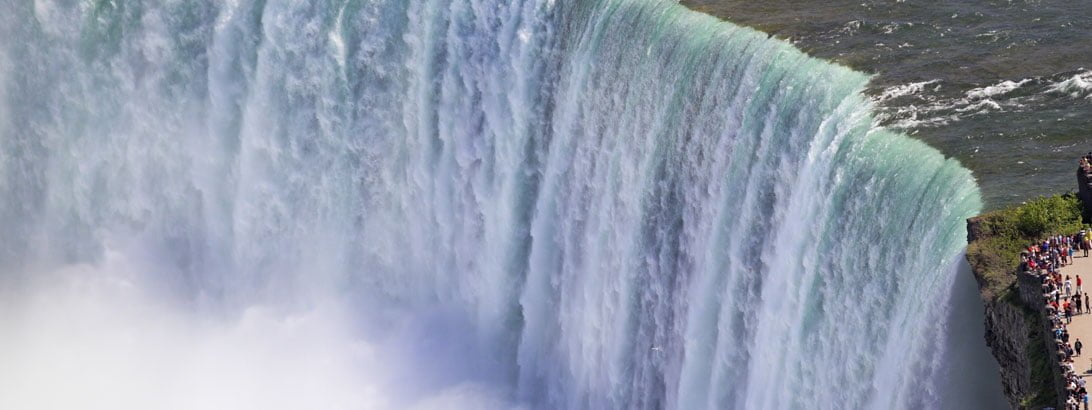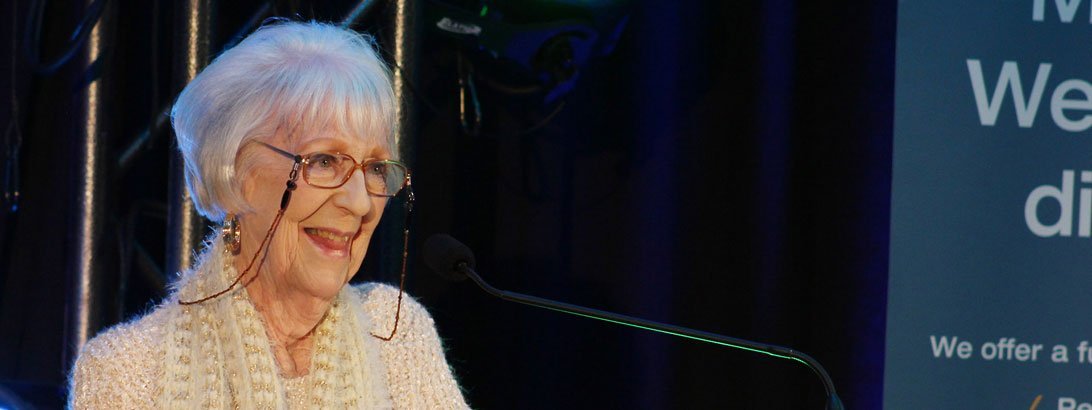
Max Cananzi, president and CEO of Horizon Utilities, and Mishka Balsom, president and CEO of the GNCC, at the Niagara Business Leadership Series
St. Catharines homeowners should expect multi-year savings following a blockbuster hydro utility merger deal.
That merger of Hydro One Brampton with Horizon Utilities, PowerStream, and Enersource was announced Thursday, and followed municipal shareholder approvals.
If formally approved by regulators, it will create second-largest electricity distributor in Ontario.
At a Hamilton media conference, the move was forecast to push down annual electricity rates $40 per year for the average homeowner customer.
It will also add millions of dollars in dividends to municipalities, who own the respective utilities to be merged.
Municipal councils for the cities of Barrie, Markham, Vaughan, Mississauga, Hamilton and St. Catharines all voted in favour with the merger.
“This is a very historic moment,” said St. Catharines Mayor Walter Sendzik, who joined those mayors at the official signing held at Horizon Utilities’ office.
“The effects will have a generational impact,” said Sendzik, one of the speakers at the live-streamed event. “Those of us that have families (and children) that are young and really on the cusp of wanting to stay in their communities, this creates that opportunity.
Sendzik said the city’s strategic plan is built on the “four pillars of sustainability — economic, social, cultural and environmental.”
“When our council reviewed this merger opportunity it hit all the marks,” he said, pointing to dividends coming back to the city and allowing it to reinvest in culture.
He said environmentally, the merger is sensitive to climate change by “(exploring) alternative energy by looking at the different forms of energy distribution.”
In his speech, Sendzik said customers can also expect 5.9 per cent lower annual rates “through the entire 25-year forecast.” St. Catharines homeowners should average-out at $40 per year in bill savings over that period.
Annual dividends to the city should also bump up to $4.5 million, from $3.5 million, over that time.
The new company — which was called “Mergeco” as a placeholder name at the news conference — is subject to post-closing adjustments and regulatory approval from the Ontario Energy Board, anticipated to occur late this year.
Meanwhile, Ontario has now executed a Share Purchase Agreement with PowerStream (represented Thursday by Barrie, Markham, Vaughan), Enersource (Mississauga), and Horizon.
The purchasers have agreed to pay $607 million for Hydro One Brampton, which was represented at Thursday’s event by Ontario Energy Minister Bob Chiarelli.
“What we’re doing here today is a very significant transformation,” said Chiarelli at the event. “We’re celebrating a leap of wisdom … leadership and vision.”
Net revenue gains from the Hydro One Brampton sale will be dedicated to the province’s Trillium Trust to help fund transit, transportation and other priority infrastructure as part of the “Moving Ontario Forward” initiative.
“I think this will be a case study for universities to look at how to do this,” Sendzik said. “When you look at how this merger will have an impact on Ontario, we’re hoping other municipalities and other distributors will see how this will have a net positive impact.
“It will make us more competitive and provide relief for ratepayers that have been asking for it.”
Max Cananzi, Horizon Utilities’ president and CEO, said it’s possible the merged utility, when approved, could possibly add jobs to St. Catharines with the “shifting of some locations and functions.”
He said St Catharines “will be maintaining the current call centre location and the many jobs currently there. Service levels will be the same or better as a result of the merger.”
“It’s a really historic event,” said Cananzi, in that interview. “This is a milestone in the electricity sector in the province. We’ll look back at … the creation of an exciting, dynamic new company that St. Catharines is part of.”
In an interview after the event, Sendzik said the merger “will actually allow for a better customer experience.”
“We’ll have greater access to greater technology and the utility to address major concerns related to power outages,” he said.
Sendzik adds it provides local and regional “competitive advantage” with lower energy rates for all Horizon customers, including businesses.
Mishka Balsom CEO of the Greater Niagara Chamber of Commerce said the merger “results in reduced electricity costs and improved service for St. Catharines ratepayers.”
“Plus, it holds the promise of increased dividends for the City of St. Catharines, while maintaining the current jobs here,” Balsom said.
“One can only call this a true win-win situation.”
Thursday morning’s event was attended by Chiarelli, mayors for the shareholder communities of Mississauga (Enersource), the cities of Hamilton and St. Catharines (Horizon Utilities), the cities of Barrie, Markham and Vaughan (PowerStream)
donfraser@postmedia.com
Twitter: @don_standard
Original article: http://www.stcatharinesstandard.ca/2016/03/24/horizon-signs-merger-with-gta-utilities








